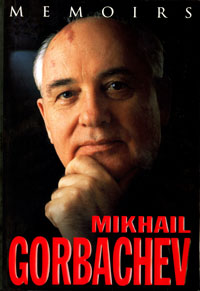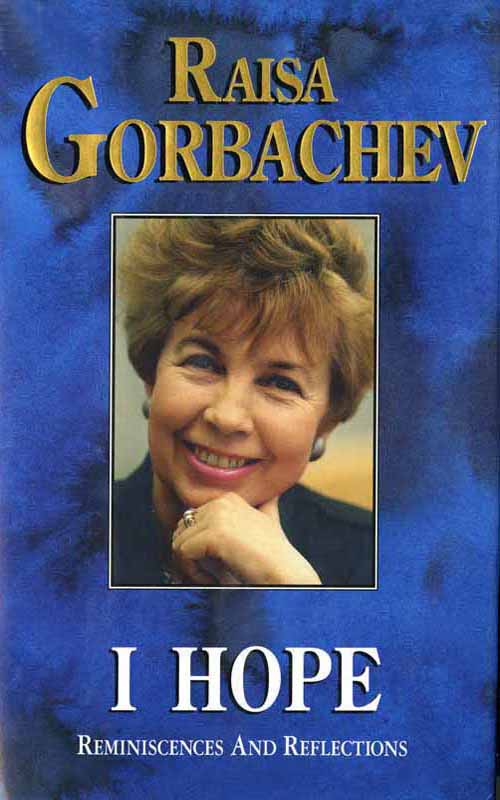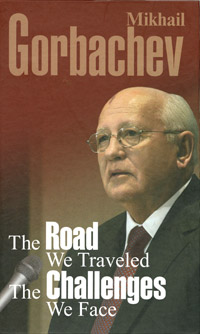7 December 2012
Q&A, 25 Years On, Gorbachev Recalls Nuclear MilestoneMikhail Gorbachev regrets the Soviet Union's deployment of hundreds of SS-20 intermediate-range nuclear missiles at bases in Eastern Europe and Western Russia beginning in the late 1970s. The move prompted the United States to respond by deploying hundreds of Pershing II missiles in Europe — just a five-minute flight from Moscow. "It was like holding a gun to our head," Gorbachev said in an interview. "It increased the risk of nuclear war, even one that was the result of an accident or technical glitch." The nuclear brinkmanship ended up laying the groundwork for a treaty that took the world by surprise and began the end of the Cold War 25 years ago this Saturday. The Intermediate-Range Nuclear Forces Treaty, signed by Gorbachev and U.S. President Ronald Reagan in Washington on Dec. 8, 1987, marked the first time the superpowers had agreed to actually eliminate nuclear weapons. All nuclear missiles with a range of 500 to 5,500 kilometers from both countries' arsenals were to be destroyed, including the SS-20s and Pershing IIs in Europe. The treaty had an uncommonly explicit 126-page appendix. It contained descriptions, quantities and exact locations — including drawings and map coordinates — of all the storage and launch sites of 846 U.S. and 1,846 Soviet missiles, which were eventually destroyed by June 1991. The elimination process was carried out across the United States, Britain, mainland Europe and the Soviet Union under the watchful eyes of hundreds of inspectors on both sides. But the truly unique feature of the INF Treaty was the mutual acceptance of "continuous monitoring" of missile manufacturing facilities. "When the treaty was being readied and the discussion turned to the topic of 'perimeter control,' we insisted that it would apply to the American factory in Utah where such missiles used to be made," Gorbachev said. Gorbachev, who credits much of his success to his ability to find a common language, reminisced with The Moscow Times by e-mail about his signing of the INF Treaty and said he remains cautiously optimistic despite tensions over Washington's determination to deploy a missile defense shield in Europe and moves by President Vladimir Putin to end post-Soviet cooperation in the destruction of nuclear weapons. "I welcome President Obama's recent statement about his readiness to cooperate with Russia as an equal partner," said Gorbachev, now 82. "I think it is possible to find a common language and reach agreement on that foundation." This interview has been edited for length and clarity.
A: Having started perestroika, the Soviet leadership understood the need to move along the process of nuclear disarmament. This reflected the position of the entire Soviet leadership. We came to the conclusion that the deployment of medium-range missiles in Europe had been a mistake because it allowed the U.S. to install Pershing II missiles within a 5-minute flight time to Moscow. This was like holding a gun to our head. It increased the risk of nuclear war, even one that was the result of an accident or technical glitch. Because of that, in Reykjavik, one of our proposals, which had the Politburo's approval, was to mutually liquidate these missiles. Of course, in order to open the way to that agreement, and then to an agreement on reducing strategic nuclear weapons, it was necessary to resolve many political, military and technical issues. The Soviet Union's position was developed in the framework of the so-called "Group of Five," which included top officials from the Defense Ministry and defense industry. As a result of their discussions, they reached a consensus that the treaty should be signed, and their decision was confirmed by the Politburo. We expected the treaty would take a first step toward not only ending the nuclear arms race, but also toward substantially reducing the arsenals. This goal was achieved.
A: A bilateral consultative commission resolved all the problems that arose during the implementation of the treaty. I don't remember that it was ever necessary to bring any issues to the personal attention of President Reagan or me. Overall, we worked under the concept of, "If you want control, OK, but this will be done strictly on the basis of reciprocity." Because of this, when the treaty was being readied and the discussion turned to the topic of "perimeter control," we insisted that it would apply to the American factory in Utah, where such missiles used to be made. The Americans agreed to that point, eventually.
A: The process of creating the INF Treaty in and of itself was nothing unique. It involved negotiations, bringing separate positions closer together, considering the interests of both sides. But political will was really the principal element. It was exhibited by our side and the American side. Afterward, unfortunately, the rate of nuclear arms reduction slowed. Only in 2010 did Presidents Obama and Medvedev take a significant step forward by signing the new START treaty, which not only sets reduced levels for strategic weapons, but also involves a mutual system of verification. But further progress in this direction is dependent on the overall demilitarization of international relations. There is a lot to be alarmed about today. Nuclear arsenals are still huge — overall there are several thousand warheads. Hundreds of tactical nuclear weapons remain in Europe. The Comprehensive Nuclear Test-Ban Treaty has not entered into force. New nuclear powers have emerged, and we are faced with further proliferation of nuclear weapons. A new arms race has begun right before our eyes, and the threat of the militarization of space is looming. Promises made as part of the joint statement of the 1985 Geneva summit to not seek military superiority are lost in the past. Nearly half of all global military spending is done by one power, the United States. If the situation continues, we can forget about the goal of a nuclear weapons-free world. At some point that rifle will be fired. The leaders of our two countries must not forget that, as before, the process of nuclear disarmament and avoiding a nuclear war is the responsibility of two powers— the United States and Russia. The Moscow Times, 7.12.2012 |
|
The XXI century will be a сentury either of total all-embracing crisis or of moral and spiritual healing that will reinvigorate humankind. It is my conviction that all of us - all reasonable political leaders, all spiritual and ideological movements, all faiths - must help in this transition to a triumph of humanism and justice, in making the XXI century a century of a new human renaissance.
|
|
Русский |




